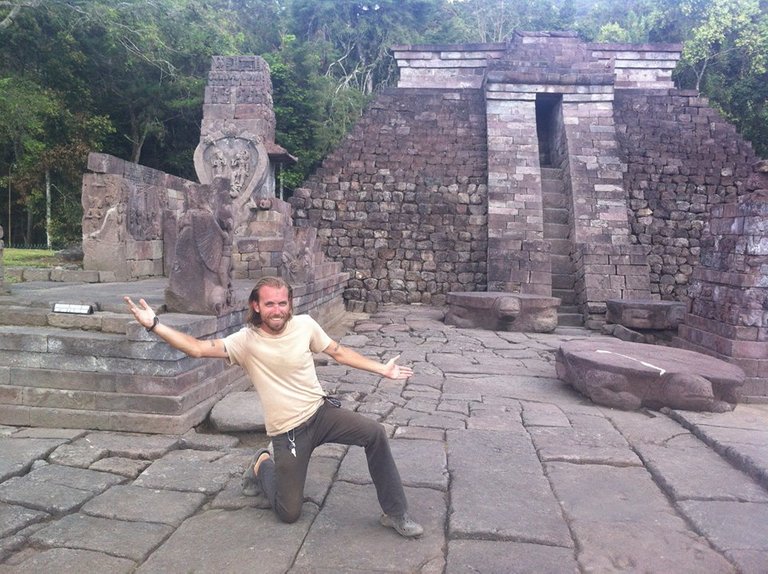The drive itself is pretty straightforward. From Jogjakarta you head to Solo, the other capital of Javanese culture, and drive through the city and keep going northeasterly. Traffic tapers off, it begins to get hilly, and then a proper ascent begins towards the mountainous villages surrounding Candi Sukuh.

Candi Sukuh is one of the more anomalous things I have ever seen in my life. It is a temple in central Java, dated to the 15th century, yet it doesn’t look Hindu, or traditionally Javanese, or Buddhist, or any of the other religions or cultural systems which would have inhabited this island at the time.
Instead, compellingly, it resembles a Mesoamerican temple or pyramid complex. If you looked at a photo of Candi Sukuh and you didn’t know where it was, you would assume it was in Mexico or Guatemala. Its central structure is a step pyramid with stairs leading up the centre to the top, where some kind of ritual activity was to take place.
There are reliefs depicting scenes carved in stone around the main pyramid which uncannily resemble Mayan and Aztec motifs. The symbolism is not glaringly Hindu, as the faded and curled-at-the-edges informational plaque in front of the complex attempts to paper over.
Not to mention that the whole vibe of the place is bizarre, not in a bad or eerie way, but just that it seems like this thing you’re staring at is not homegrown, that it came from somewhere else, that it knows it, and that it is smiling at you looking at it trying to figure it out.
Candi Sukuh is actually quite small – the entire complex sits on a piece of land probably less than a hectare in size. There were only a couple other people there, Javanese tourists, when I visited. I strolled around for about a half hour, had the parking lot attendant take a couple goofy pictures of me, and then motored back down the mountain to Jogjakarta.
When I got back to town that night I went over to the house of an older Javanese friend of mine and told him about where I’d been. He regaled me with a highly detailed account of how people from what is now Mexico came here centuries ago, built Candi Sukuh as a gesture of cultural exchange and in a vain attempt to transmit their solar, phallic religion to these islands, traded with the Javanese, and took off.
Clearly, more research and investigation needs to be done into this fascinating structure, for no one can deny that there are oddities about it which cannot be explained away easily. A troupe of historians and archaeologists needs to be dispatched to the site so that we can begin to unravel its origins and story.
In the meantime, I’m gonna go ahead and believe the story my older Javanese friend told me about the Maya coming here millennia ago.